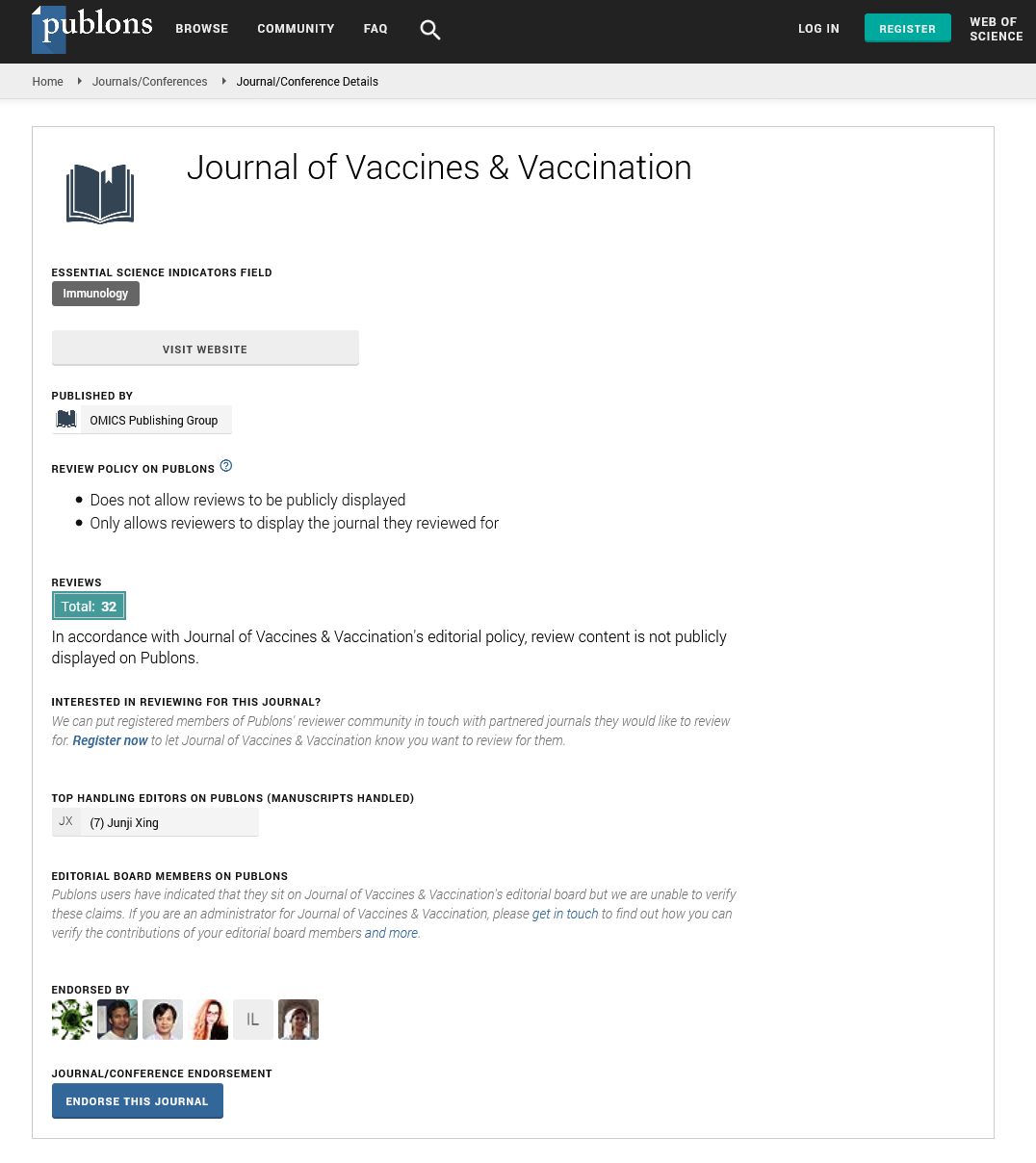Indexed In
- Academic Journals Database
- Open J Gate
- Genamics JournalSeek
- JournalTOCs
- China National Knowledge Infrastructure (CNKI)
- Scimago
- Ulrich's Periodicals Directory
- RefSeek
- Hamdard University
- EBSCO A-Z
- OCLC- WorldCat
- Publons
- MIAR
- University Grants Commission
- Geneva Foundation for Medical Education and Research
- Euro Pub
- Google Scholar
Useful Links
Share This Page
Open Access Journals
- Agri and Aquaculture
- Biochemistry
- Bioinformatics & Systems Biology
- Business & Management
- Chemistry
- Clinical Sciences
- Engineering
- Food & Nutrition
- General Science
- Genetics & Molecular Biology
- Immunology & Microbiology
- Medical Sciences
- Neuroscience & Psychology
- Nursing & Health Care
- Pharmaceutical Sciences
Strategy for eradication of leprosy by using the DCGI/USFDA approved vaccine based on Mycobacterium indicus pranii
8th Indo Global summit and Expo on Vaccines, Therapeutics & Healthcare
November 02-04, 2015 HICC, Hyderabad, India
G P Talwar
Talwar Research Foundation, India
Keynote: J Vaccines Vaccin
Abstract:
Leprosy infects only 1% of humans, 99% are immune to contracting this disease. The nature of defect in those developing multibacillary Lepromatus Leprosy is the inability of their immune cells to recognize a key antigen of M. leprae. It is a persisting defect, even after the patients are cured by multi-drugs regimen; they remain Mitsuda negative, a delayed hypersensitivity skin test. Such individuals can become again patients on re-exposure to M. leprae. These are also the individuals, who harbor M. leprae and let these grow in their body. It takes 2 to 10 years of incubation period, before the disease is evident. The National Leprosy Program is based on diagnosing and treating the patients with multi drugs regimen. The prevalence of the disease has come down significantly over years, but has now plateaued to a stable level since several years. Meanwhile the incidence of new cases is higher each year than the prevalence figures. In some endemic districts, these have reached alarming figures. Drugs do not correct the immunological deficit. We developed an immunotherapeutic vaccine for multi-bacillary patients, which not only expedites bacillary clearance, but also converts a large percentage of patients to Mitsuda positivity status, indicating thereby its ability to upgrade their immune status to key M. leprae antigens. After phase-wise clinical and field trials, it was approved by the Drugs Controller General of India and also by USFDA. It has been passed on to a company and is available for public use. It is based on a non-pathogenic cultivable mycobacterium, which shares antigens with both M. leprae and M. tuberculosis. It has been sequenced by Profs. Hasnain Anil Tyagi and Akhlesh Tyagi and being hitherto not existing in World Data Bank, has been named as Mycobacterium indicus pranii. It is our proposal that besides the drugs, the MiP vaccine may also be used for treatment of leprosy patients and their family members and contacts be immunized with the vaccine, with the expectation that their immunity is upgraded. The proposal is accepted by the Indian Council of Medical Research and the Ministry of Health, Govt. of India. A Pilot Project is due to start in few endemic districts of the country.
Biography :
G P Talwar is the Director of Research for Talwar Research Foundation. Amongst many, he received the National Award in Bio-Medicine, Basanti Devi Amirchand Prize of ICMR, National Lecturer UGC, JC Bose Award Life Sciences, FICCI Award, Sunderlal Hora and Golden Jubilee Commemoration Medals of INSA, Jalma Trust Prize in Leprosy, Rameshwardas Birla National Award, Glaxo oration NAMS, Ranbaxy Research Award, Mastrionni-Segal Award, Friedrich von Siemens Lecture. He was conferred Padma Bhushan by President of India & Officer de la Legion d’ Honneur by President of France.
Email: gptalwar@gmail.com

